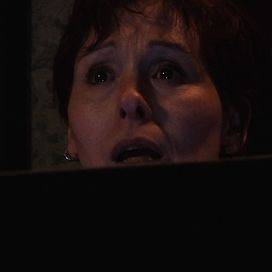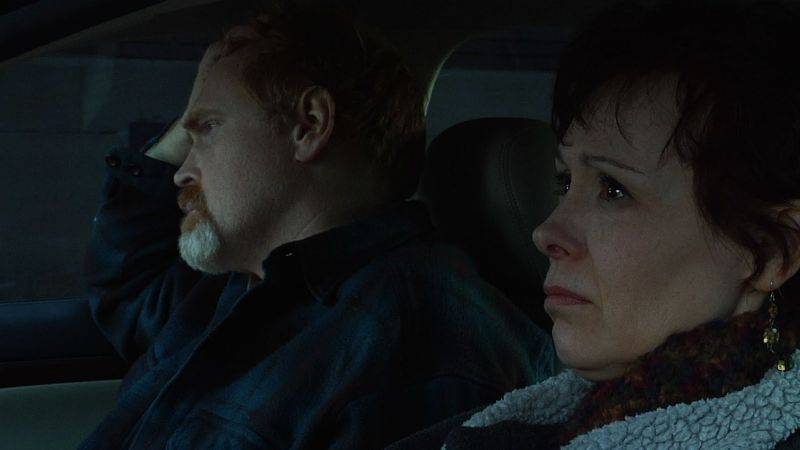
One might suggest that all houses are haunted. Not with evil spirits or floating sheets out of Scooby Doo, but with history. With the residue of lives lived and actions taken, not taken, maybe regretted. I’ve often wondered: do people who move into old houses only inherit the bad? The unexplainable noises in the night? Why do they never inherit the joy? The birthdays celebrated, the baby’s first steps, the kisses goodnight? In the history of horror films, it is of course the rattlin’ bones type of history that must be explained or eradicated. That makes sense, I suppose, as it’s probably a whole lot more fun to film and watch. And now, out of the ever-growing, ever-improving local filmmaking scene, Champaign-Urbana has a brand-new story to behold and enjoy.
The local film scene has been getting a lot of attention lately, a good deal of it from your friendly neighborhood Smile Politely staff. From Scary Normal to the web series Up the Creek to the Pens To Lens competition, it should be a surprise to no one that there is a serious amount of acting, writing, and directing talent in the CU area. Much of that talent is currently concentrated on a project called House of Thaddeus, a “haunted house” film that is about far more than restless spirits or doors slamming in the night.
The film focuses on a married couple who, upon moving to a new town and finding a lovely old house to call home, find that the house contains secrets and specters of events and people from the past. And I really hope that synopsis is enough to whet your appetite, because that’s about all the information you’re going to get—out of me, the filmmakers, or the tight-lipped cast.
This may be a local independent film, far from the huge money machine and nondisclosure agreements of Hollywood, but the people behind it are well-versed in the trade. Not only are they enormously talented at the crafts of acting, writing, and directing, but they can also keep a secret.
I reached out to the film’s director, Mike Boedicker, as well as its writer and cast, including Bill Kephart, Joi Hoffsommer, Barbara Evans, Mike Trippiedi, and Cara Maurizi, and what follows is the illuminating yet cryptic result.
*****
Smile Politely: This film has some of the great old haunted house elements, but it goes another way with them. What are the elements of the haunted house genre that appealed to you most, going into the project? Are there specific films in this genre that have influenced you?
Mike Boedicker: The genre is inherently cinematic, and that appealed to us. We wanted to explore the house visually, depict it as a character, and play with tension and mood. But this film departs from the genre in many ways, especially in showing the reality of everyday life in a place that has a dark reputation. How do you answer the door when you don’t know what the next uninvited visitor will want of you—or of the house?
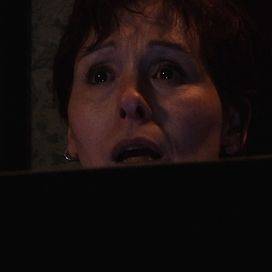
Bill Kephart: We both like The Shining, and Mike made sure I saw Rosemary’s Baby, which I really liked. With this project, I’ve realized I’m attracted to, and fascinated by, the concept of witchcraft, because it’s “real.” People actually believe in it and have associated rituals. The Thaddeus character is based on Aleister Crowley, who wasone of many people who were deeply involved in very popular magical societies in the early 1900s. People believed certain rituals would change their fate and control of life, and frankly there must have been something to it, or people wouldn’t have bought into it. The question is, are there really spirits out there, or does merely believing in spirits have its own effect? I’m not just talking witchcraft, I’m referring to any religion. For me, that is a very real, very dramatic idea/struggle/question, as opposed to the fiction of most haunted house movies where an unseen force flips somebody around a bedroom. I don’t think much of films that rely on stylish editing to scare. That’s Hollywood. From the script to working with our composer, John Toenjes, Mike and I purposely avoided manipulation wherever we could. Instead we tried to create realistic situations and let the audience see what they want to see.
Boedicker: The work of Roman Polanski is a big influence. Though he’s never done a haunted house story, he’s made several masterpieces set largely in confined quarters: Rosemary’s Baby, Repulsion, and The Tenant. The Shining and The Exorcist are two more influences, especially the way they use a naturalistic style and avoid the trappings of most horror films.
SP: When Bill was on the Smile Politely podcast last week (with Joi Hoffsommer), he mentioned that the house itself was the inspiration for the story. What about the place spoke to you? How did the location lend itself to storytelling (in terms of writing, acting, directing)?
Boedicker: It’s beautiful and photogenic, which we realized after using it for a couple of short scenes on our last feature, Revolting. When the owner, the late Gary Gardner (who plays Prescott, the seller of the house, in House of Thaddeus), offered it to us for future projects, Bill and I immediately set to work developing storylines. We probably outlined at least 5 or 6, all VERY different than the eventual story.
I was attracted not just by the house’s photographic possibilities, but by the idea of setting almost an entire film in one location. Multi-location shoots are always tough, as you spend hours simply moving the cast and crew between sets. That said, a single location can be challenging, too–the audience wants to see other places—so our solution was a large number of visitors to keep the story interesting.
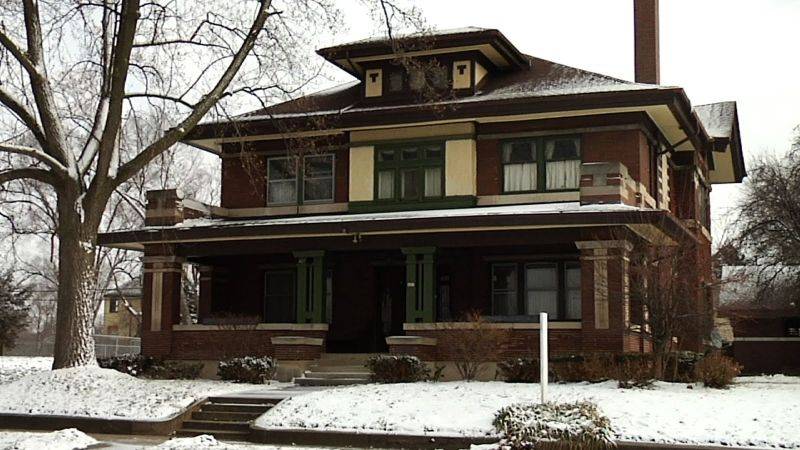
We wrote a number of scenes to make use of the house’s unique furnishings and decor. The stone “T” markers on the outside, for example, inspired the name Thaddeus; I saw them, and the name popped into my head. There’s a scene where a character listens to an old piano roll recorded by Thaddeus (his “music diary”) on a player piano in the parlor. We loved the player piano because it’s a nonsupernatural way to imply a kind of creepy communication from beyond the grave. You’re not just hearing what someone once played; you’re actually watching their performance as those keys move. Gary told us the player piano worked, so we wrote the scene, then found out it DIDN’T work and would cost lots of money to fix. We loved the scene too much to consider dropping it, so we scoured the area for a working player piano (which had to be located in a room that could pass for one of Thaddeus’ rooms). We finally found one, then had to find the music and create the piano roll (which is itself a long story).
While the location lent itself to the story, there were a number of technical and logistical challenges. The walls are mostly deep oak or dark patterned wallpaper, and actors would disappear in front of them without careful lighting (which our cinematographer, Johnny Robinson, very ably supplied). The house is located on a busy street in Danville, but we implied it was a quiet street, which meant lots of waiting for cars to pass before shooting exteriors.
Kephart: Frankly, while we got free use of a 100-year-old house already dressed with beautiful antiques available anytime day or night—thanks to the late Gary Gardner, who plays Prescott (pictured below)—had it been a warehouse, we would have written a story about a warehouse. At this level of filmmaking you don’t turn down a free set! Mike and I had previously talked about doing something in the horror genre, and when Mike was offered the house, we naturally latched onto that story idea. It was a GREAT space to shoot in, because it’s so huge there were plenty of places to store gear, plenty of different rooms to stage scenes, and all the rooms were completely furnished, so many times we just slept there for the next day’s shoot. We lived in that house every weekend for several months; it was crazy convenient.
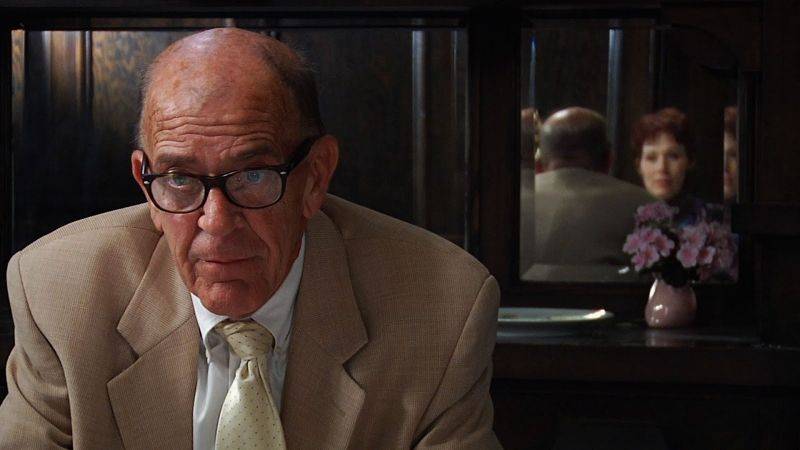
SP: I love the crow story on the podcast. [Editor’s Note: If you haven’t listened to the podcast interview, go do that. We’ll wait.] Obviously the crow situation was a big obstacle to production. What are some of the other difficulties to independent filmmaking? Alternately, what do you enjoy most about it?
Kephart: Oh don’t get Mike started on the crow alarms! He was the one that struggled with the environmental stuff. For me it was all the hats I was wearing in addition to being an actor. I did makeup, props, and practical effects for the film. There were many times when I was not as prepared as I could have been—in fact, not even knowing my lines—because I was getting one of those things ready for a shot.
Boedicker: The biggest challenge to working this way (i.e. microbudgets, small casts and crews, long production periods) is the need to wear so many hats. These projects stretch you thin and require a complete commitment. Everyone involved has a day job, so we had to film on weekends over several months. I typically lose 5-6 pounds every shooting weekend (then gain it back during the week!). Editing normally takes a full year once you include mixing, color correction, and other finishing—again, because it’s done evenings and weekends. That’s why these projects take 2-3 years.
Having said that, what I most enjoy about working this way is the complete freedom it gives to tell your own story your own way. Once you accept the fact that you can’t make Saving Private Ryan on a microbudget, and realize you’ll be restricted to small, character-driven stories, then you’re free to do just about anything. We can tell personal stories without having to worry about Box Office and bankability.
Kephart: The best part of making indie films? The same as the worst part! Getting to be involved in every aspect of a production. You get to do jobs you’d never get to do on a professional set, cool stuff that requires both MacGyver problem-solving and real artistry. At this level—or at least the way Mike works as a director—you’re not just filling a place in the pyramid, you’re part of a huddle, working together. Oh, and that’s another great part of the experience: having fun with the rest of the cast and crew. In fact I hate to call them cast and crew. They are friends, and we all made a film.
I should also add, in the post-production phase, Mike and I did a ton of stuff that we wish we could have had someone else do, and we often laud ourselves for just how much the two of us accomplished, but when we emerge from our fog of self-congratulation we both recognize we’d never be where we’re at without the dedication of three people: actress Joi Hoffsommer, director of photography Johnny Robinson, and sound man Victor Miely. They were always there, always excellent, and always cared.
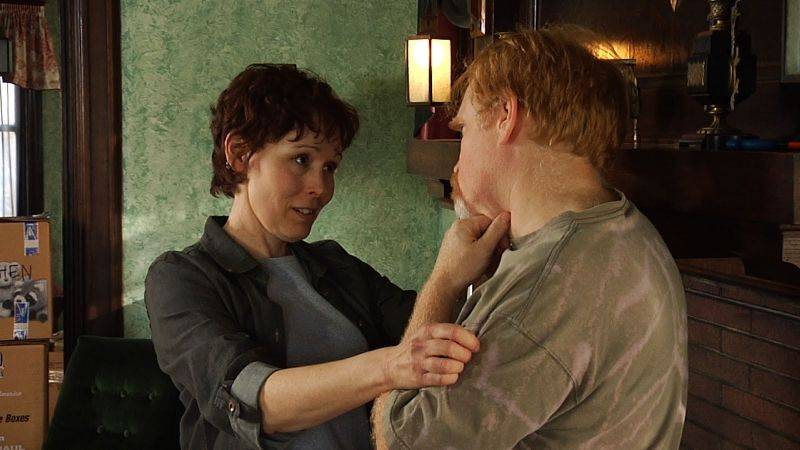
SP: What are your plans (or hopes) for the film beyond its premiere? Are there other screenings set up? Film festivals?
Kephart: We want to get IN several festivals (a feat on it’s own), hopefully some high-profile, and hopefully win some laurel leaves. That would take care of the egos. But what we’d really like is to make some money with the film so we can put that toward our next project.
Boedicker: After the premiere, we’ll start investigating festivals, arranging more screenings in the area this fall, and getting the film ready for DVD and Blu-Ray authoring. After it has played in some festivals, we plan to seek distribution. Then, when sanity has subsided and insanity returned, start thinking about the next film.
SP: Let’s turn our attention to the actors. If you would, please tell me who you play in the film and how your character fits into the plot. No spoilers, just…give me the back of the baseball card.
Joi Hoffsommer: I will do my best to give you something to work with. I play Claire, who is the wife in the couple around whom the film centers. We [Claire and her husband Tom, played by Bill Kephart] are relocating to a new town and buy a house that seems too good to be true. Turns out it has a dark past, and that creates a conflict for the couple and is the basis of what becomes the conflict in the film.
Kephart: Tom is a high school science teacher and a skeptic. He finds his pleasure in the real world, this world, and shows little understanding of people who seek otherworldly answers.
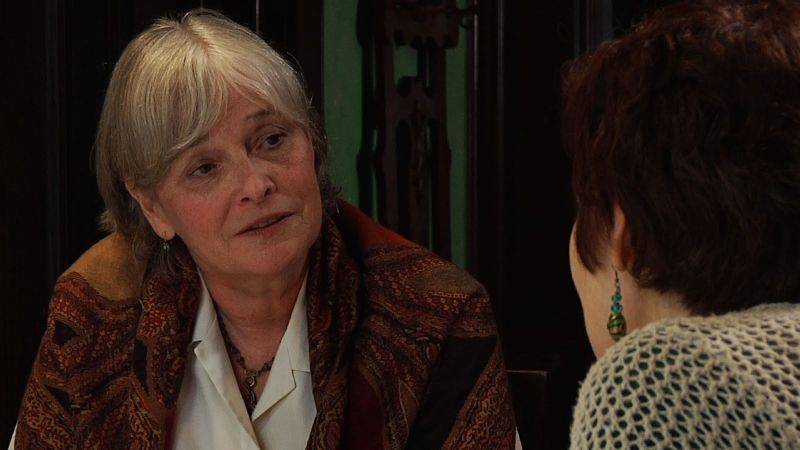
Barbara Evans (pictured above): I play a woman who lived in the house when she was younger. She’s a clairevoyant who leads a séance to help discover some truths about a tragic event in the house’s past. (At least, that’s what happened in a previous screening I saw. I understand it’s been substantially edited since then.)
Cara Maurizi: My role is pretty small…but memorable! I play Goth Girl, and I show up to the house with my boyfriend, played by Jonathan Harden. We are a couple of kids who are into anything death/spooky/goth-related and we hear about this house where all of the murders took place. The woman who lives there (played by Joi) lets us in the house and gives us a tour. She leaves us alone to explore and when her husband (Bill Kephart) returns home, he catches us having sex in the bedroom where two of the bodies were found.
Mike Trippiedi: House of Thaddeus has a huge cast; probably one of the largest cast of any local film ever produced so far. With the exception of the leads—Joi Hoffsommer, Bill Kephart, Gary Gardner, Barb Evans and Julia Megan Sullivan—all of the other actors play small but crucial roles. It is literally a Who’s Who of local actors, and part of the fun is seeing what actor is going to show up in the next scene and how their character adds to the layers of the story. [Editor’s Note: See how Mike told us absolutely nothing about his character? In addition to being a terrific actor, Trippiedi is also well-known as a writer and a director. Cagey.]
SP: Anything else you can tell me about the film…? At all?
Hoffsommer: This is a new take on an old genre, the haunted house film. It uses the premise of a haunting to create the house as a character, but it is not a horror film. It is a drama with elements of a thriller to heighten the conflict and the stakes for the characters.
Trippiedi: Sorry, can’t give away any more. I will say this, though. The performances are excellent. The look of the film is gorgeous. And the audience is in for quite a ride.
Evans: It was a delight to work with Mike and Bill, and of course to meet the late Gary Gardner and have the opportunity to explore his beautiful historic house.
SP: If you were to create a tagline for the film, something for the poster, what would it be?
Maurizi: “A house with a past that is destroying the present.”
*****
House of Thaddeus has its premiere Sunday, August 18 at the Art Theater Co-op. The doors will open at 4:30; then, at 5:00, the filmmakers will say a few words before screening the film. The charge is only $5, and a big audience is expected, so make plans now. Smile Politely’s own Thom Schnarre will be on hand to cover the event, and you can read his impressions—and a review of the film itself—next week.
I highly recommend visiting the House of Thaddeus website for some creepy images and more (teasing) information.
**All stills courtesy of the House of Thaddeus production company.








